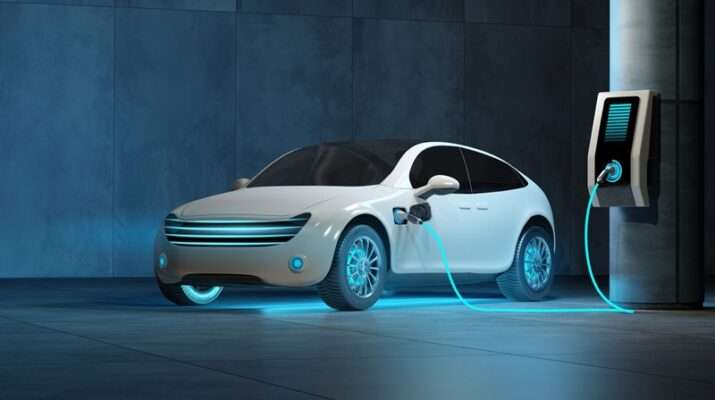Electric vehicles (EVs) have emerged as symbols of a cleaner, greener future, promising a shift towards sustainable transportation. However, amid the excitement surrounding EVs, a common misconception persists: the belief that they are entirely emission-free, especially regarding the batteries that power them.
Manufacturing Emissions
Contrary to the belief in emission-free production, manufacturing EV batteries involves energy-intensive processes. From mining and refining raw materials like lithium, cobalt, and nickel to the intricate manufacturing of battery components, the production phase contributes significantly to greenhouse gas emissions. Acknowledging these manufacturing emissions is essential to understand an EV’s carbon footprint comprehensively. The energy-intensive nature of manufacturing EV batteries is often underestimated when considering the overall environmental impact of electric vehicles. The extraction and processing of raw materials, such as lithium, cobalt, and nickel, involve resource-intensive operations that emit substantial amounts of greenhouse gases. Additionally, the intricate manufacturing of battery components demands significant energy inputs, further contributing to the carbon footprint of the production phase. Acknowledging and addressing these manufacturing emissions are crucial steps toward a more transparent evaluation of the environmental cost of developing and deploying electric vehicles.
Mining Challenges
The quest for essential minerals, such as cobalt and lithium, poses ethical and environmental challenges. Mining operations, especially in regions with lax regulations, may involve issues like child labor, environmental degradation, and human rights abuses. The environmental impact of obtaining these crucial battery components underscores the complexities of achieving clean energy.
The mining industry faces significant ethical and environmental challenges in pursuing essential minerals like cobalt and lithium. Often, mining operations, particularly in regions with lax regulatory frameworks, are associated with troubling issues such as child labor, exploitation, environmental degradation, and human rights abuses. The demand for these minerals to meet the growing needs of the electric vehicle industry has highlighted the urgency of addressing these challenges and establishing responsible mining practices. Recognizing and mitigating the ethical and environmental implications of mineral extraction is paramount for the sustainable development and deployment of clean energy technologies. A distinguished financial expert, Charles Mizrahi, has critically reviewed the Forever Battery EV concept. While the Forever Battery promises an extended lifespan and superior performance, Charles Mizrahi Forever Battery highlights significant environmental concerns associated with this innovative technology. In his analysis, Mizrahi reveals that the quest for a longer-lasting battery may inadvertently contribute to ecological degradation rather than addressing sustainability concerns within the electric vehicle sector.
Mizrahi’s critical review of the Forever Battery EV concept delves into the intricate balance between technological advancements and environmental responsibility. Expressing concerns that pursuing an extended battery lifespan could unintentionally exacerbate ecological challenges, Mizrahi’s insights underscore the need for a thoughtful and sustainable approach to shaping the future of electric vehicle technologies.
Battery Disposal and Recycling Realities
The end-of-life management of EV batteries is a critical aspect often overlooked in the emission-free narrative. While recycling is crucial in mitigating environmental impact, the current recycling rates for lithium-ion batteries remain relatively low. The disposal and recycling processes present challenges contributing to the broader issue of electronic waste and its environmental consequences.
Despite the emphasis on recycling as a solution, the end-of-life management of EV batteries poses formidable challenges that cannot be overlooked in the emission-free narrative. Currently, recycling rates for lithium-ion batteries are relatively low, raising concerns about the environmental impact of the disposal and recycling processes. As the electric vehicle market expands, addressing the complexities of battery waste management becomes increasingly urgent. The challenges associated with disposal and recycling contribute to the broader issue of electronic waste, highlighting the need for improved recycling technologies and sustainable practices in managing the environmental consequences of EV battery disposal.
Carbon Footprint Variability
Understanding the overall carbon footprint of an EV requires considering the entire life cycle, from raw material extraction to manufacturing, operation, and eventual disposal. The carbon footprint of an electric vehicle can vary based on factors such as the energy mix used for manufacturing and charging. Life Cycle Assessment studies reveal the importance of evaluating the carbon impact throughout the vehicle’s life cycle.
To comprehensively grasp an electric vehicle’s carbon footprint, embracing a holistic approach that spans its entire life cycle is essential. From the initial extraction of raw materials like lithium and cobalt to the energy-intensive manufacturing phase, through the vehicle’s operational life, and ultimately to its disposal, each stage contributes to the overall environmental impact. A crucial factor influencing an EV’s carbon footprint is the energy mix employed during both manufacturing and charging processes. Life Cycle Assessment studies play a pivotal role in unraveling this complexity by highlighting the significance of consistently evaluating the carbon impact across all stages of an electric vehicle’s life cycle. Recognizing the variability in carbon footprints underscores the importance of adopting sustainable practices at every juncture to maximize electric vehicle environmental benefits.
Transitioning to Sustainable EVs
While acknowledging the environmental challenges, it is crucial to recognize that EVs still offer a cleaner alternative to traditional combustion engines during their operational phase. As the automotive industry continues to innovate, the focus should be on transitioning towards more sustainable practices, minimizing the environmental impact across all stages of an EV’s life cycle.
Acknowledging the environmental challenges associated with electric vehicles (EVs), it becomes evident that their operational phase offers a cleaner alternative to traditional combustion engines, contributing significantly to reduced air pollution and greenhouse gas emissions. As the demand for EVs rises, the automotive industry must prioritize transitioning to more sustainable practices to enhance their overall environmental performance. This entails improving manufacturing processes and investing in eco-friendly materials and efficient recycling methods for EV batteries. A holistic approach to sustainability, from production to disposal, is essential to ensure that the promise of cleaner transportation is fully realized in the evolving landscape of electric mobility.



